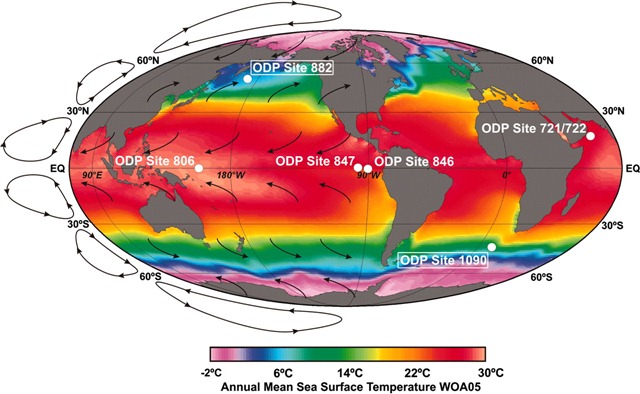Polar oceans key to temperature in the tropics
Newcastle, UK (SPX) Jun 23, 2010 – Scientists have found that the ocean temperature at the earth’s polar extremes has a significant impact thousands of miles away at the equator.
Newcastle University’s Dr Erin McClymont is part of an international team of researchers who have published research in Science, demonstrating a close link between the changes in the subpolar climate and the development of the modern tropical Pacific climate around two million years ago. The team believes this solves another piece of the puzzle concerning oceanic behaviour and its influence on climate. This research, led by the Institut de Ciencia i Tecnologia Ambientals in Barcelona, studied the Northern Pacific and Southern Atlantic sea-surface temperatures from the Pliocene Era (3.65 million years ago) to the present day. Data obtained during the reconstruction indicates that the regions close to the poles of both oceans have played a fundamental role in the way the tropical climate has evolved. The cooling and expansion of polar waters between 1.8 and 1.2 million years ago increased the temperature difference between the equator and the poles. This intensified atmospheric circulation and helped to develop the modern day ‘cold tongue’ in the east Pacific. Created by a shallow thermocline – the layer of ocean water in which temperatures fall rapidly – the cold tongue brings cold, deep waters to the surface in the east tropical Pacific. Under the warmer climate of the Pliocene, the thermocline was deeper and the cold tongue was much smaller, creating a situation more like the ‘El Nino’ events that hit the Pacific every three to five years. “Our results show that the polar oceans play a key role in the global climate, and that one outcome of a rise in global temperature could be an increase in the depth of the thermocline and contraction of the cold tongue in the eastern Pacific,” said Dr McClymont. “The high-latitudes are currently experiencing large climate changes, and our data show that this could impact on tropical climates as we saw in the Pliocene.” …
